The charge port on the front fender of the 2025 Honda CR-V e:FCEV is, ironically, what may help keep drivers of this fuel-cell vehicle away from a state of range anxiety.
It signals plug-in-hybrid-like electric range for the commute, without any need for hydrogen—a departure from the modest, hybrid-sized packs that have been typical in fuel-cell passenger vehicles up until now.
Altogether, it’s a technology combo that on one hand has been a long time coming and on the other hand is a noteworthy concession to a series of present realities for fuel-cell vehicles. While the vehicles themselves have been swimming olympic laps of transformation and refinement, the infrastructure has barely been treading water. Hydrogen was supposed to provide gasoline-like driving range and quick fills, but several hydrogen supply pinches in recent years left even early adopters uneasy about fueling up. And where are the 50-cent-a-gallon-equivalent hydrogen prices that a federally funded study suggested a decade ago would be possible by now? Nowhere in sight.
2025 Honda CR-V e:FCEV
As of January, hydrogen prices were running a whopping $33.50 per kg—roughly the energy equivalent of a gallon of gasoline. That’s about $144 to fill its 4.3-kg tank with 10,000-psi compressed hydrogen gas, set to take you an EPA-rated 241 miles. Whenever you’re home, plug into a 240-volt home charger for a couple hours and with about $4.00 of electricity, based on California prices, you’ll get an additional 29 miles without using hydrogen.
Honda won’t reveal how much of the battery’s capacity is set aside for charging, but it says that it dedicates at least as much as the Clarity Fuel Cell’s 1.6 kwh battery toward energy buffering for the fuel cell, which doesn’t ramp up instantly. For now we’ll estimate about 14 kwh dedicated to plugging in; but engineers cautioned that will vary.
Understanding what the powertrain’s like to live with will have to wait for a longer experience. But in a brief drive of the CR-V e:FCEV this past week with pretty much a full tank of hydrogen and a full charge, I found that this new fully electrified version of the popular CR-V drives with a hushed confidence, as if it were a battery-electric model.
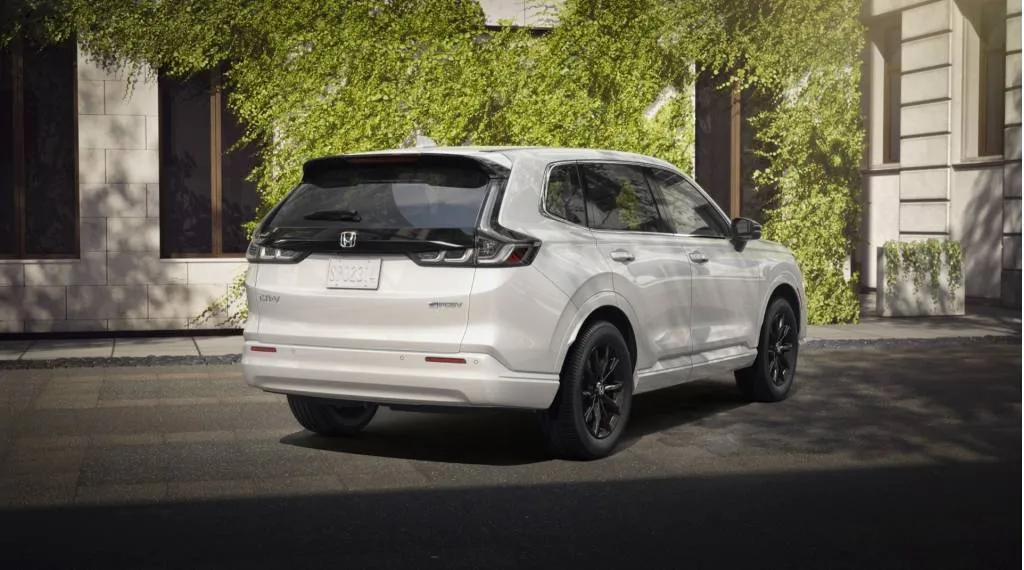
2025 Honda CR-V e:FCEV
Fuel-cell tech overcomes some baggage
Creating a convincing hydrogen fuel-cell vehicle wasn’t the hurdle here, though. The previous Honda Clarity Fuel Cell sedan already presented that thesis. Like the rival Hyundai Nexo crossover and Toyota Mirai sedan—which I’ve suggested may be the best-driving sedan Toyota makes—it showed that fuel-cell tech could provide impressive drivability and performance.
Fuel-cell vehicles have steadily gotten better over the past two decades, and I have driven nearly all of them. Hydrogen refueling has become quicker when and where it’s available; fuel-cell modules have become quieter and less obtrusive; packaging keeps improving; and drivability has improved by leaps and bounds.
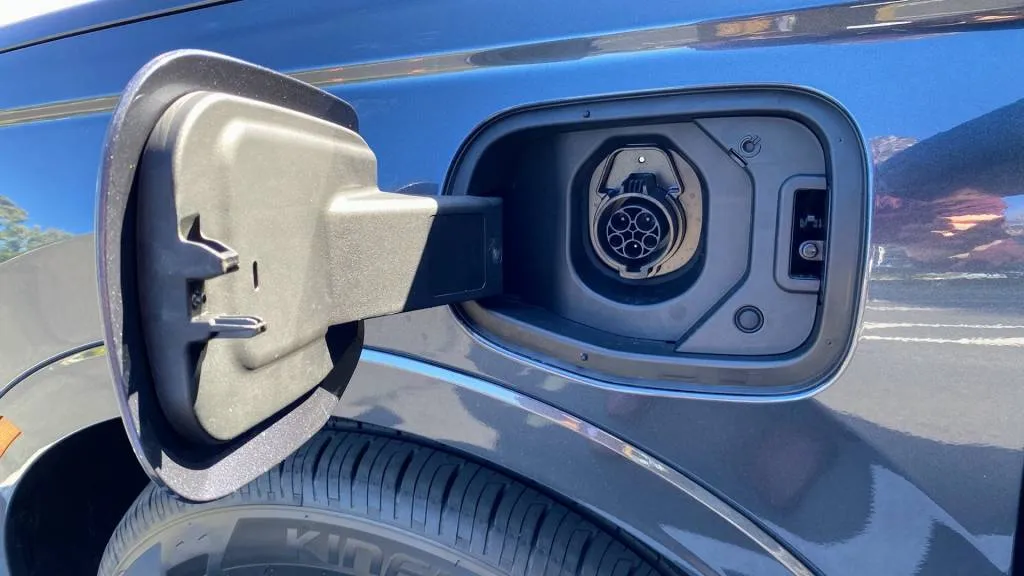
2025 Honda CR-V e:FCEV
Why haven’t fuel-cell vehicles been given charge ports in the past? I’ve been told for previous fuel-cell vehicle efforts that adding extra battery capacity defeated the purpose of shifting to fuel-cell propulsion, adding unnecessary weight and more packaging challenges. I’ve also been told that it disincentivizes the buildout of hydrogen infrastructure.
“The reason is, in order to improve the hydrogen infrastructure you need to use and consume it—so if you make it chargeable at home, then those people won’t consume the hydrogen,” Toyota Mirai chief engineer Yoshikazu Tanaka summed to Green Car Reports in 2020, explaining why a charge port had been considered for that model but ruled out.
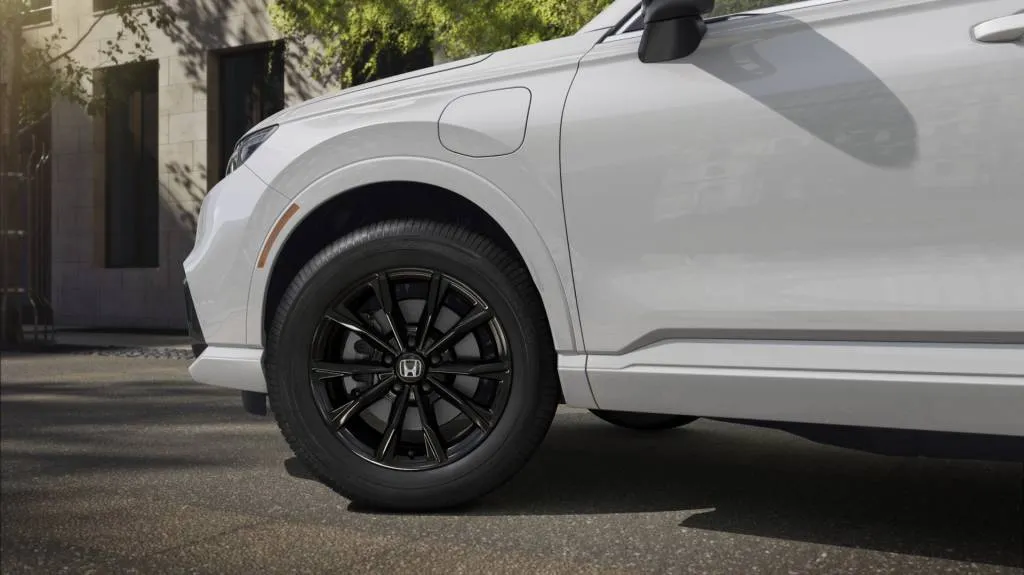
2025 Honda CR-V e:FCEV
First fuel-cell model to arrive since hydrogen moved on
Four years later, in 2024, everything has changed. All automakers still talking the hydrogen talk have seen the light—that passenger vehicles will no longer be the main focus of the technology in the near future, and that the brighter, near-term application for fuel-cell tech is beyond passenger vehicles. Honda is embarking on multiple projects for electric trucks, tracking the results of a stationary fuel-cell concept for backup power at its data center, and even looking toward space applications.
Seemingly relieved of this pressure to prove the tech versus EVs and plug-in hybrids, the e:FCEV gets the charge port. Honda also didn’t seem impassioned to make this fuel-cell vehicle a unique design or body style. From some paces away, it’s going to register as perhaps a different model year or trim level of the ubiquitous family crossover to the vast majority of the car-buying public.
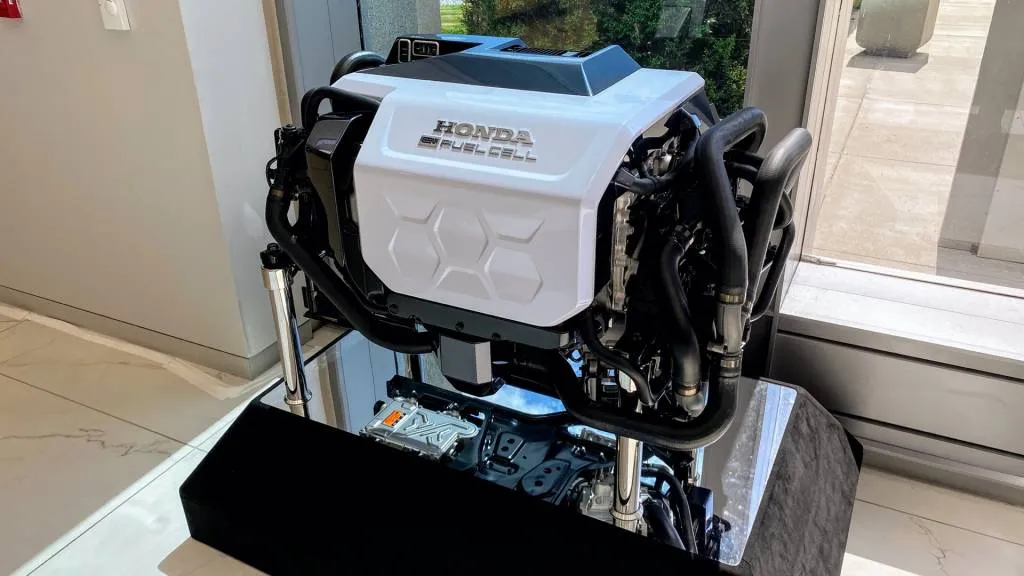
Honda fuel-cell module
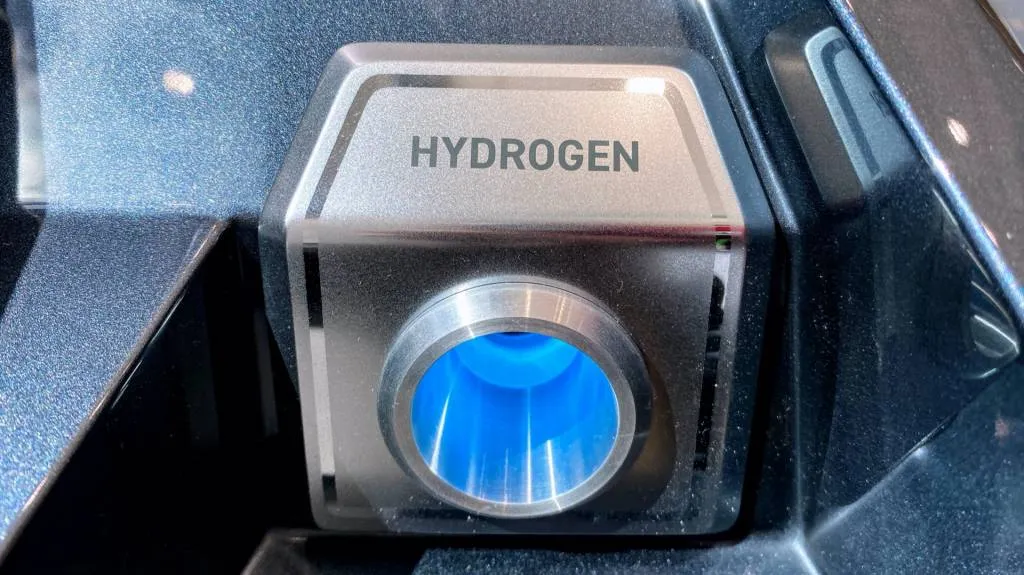
Honda fuel-cell module
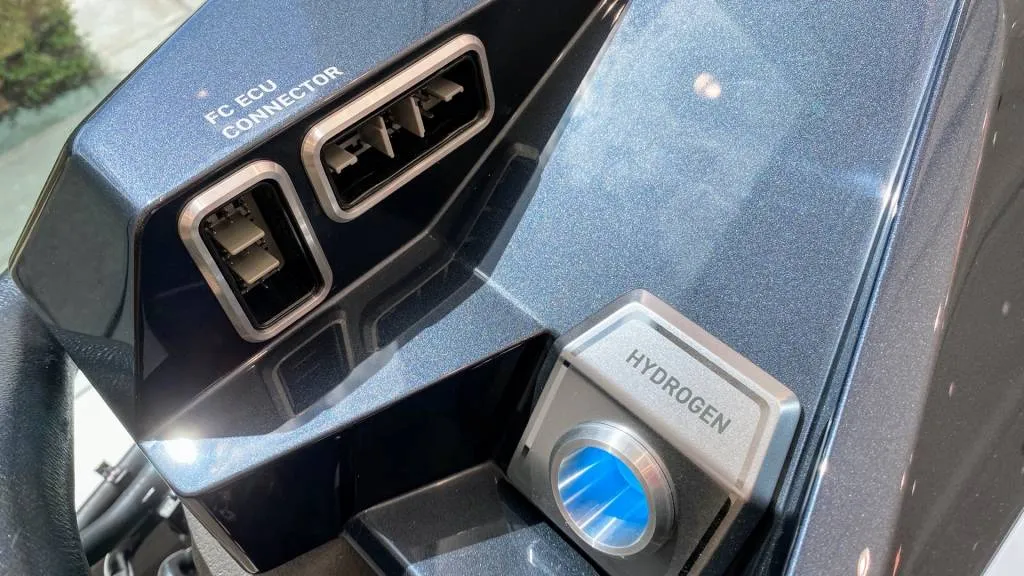
Honda fuel-cell module
Rolling science experiment? Nope, not here
Like those other fuel-cell vehicles, this special CR-V no longer deserves to be called a rolling science experiment, as its fuel-cell stacks represent generations of development over more than 25 years. Simply put, wafer-like layers host and harness a chemical reaction between oxygen and hydrogen, producing electricity, waste heat, and some water vapor.
The look might be plain, but the implementation is top-notch. The days of fuel-cell stacks sounding like a Dustbuster were left running under the seats are long gone. You can just barely register when the fuel-cell stack is running, but you have to know what to listen for. You won’t get your feet wet when loading the car either; Honda has relocated the drain for the fuel-cell to the inside the right rear tire rather than in the tailpipe position.
Amid these conflicting signals, this is the start of the second generation of what Honda is terming a “fuel cell module”—developed with GM and made in Michigan—as both companies pivot the tech toward those commercial vehicles, construction vehicles, agriculture, and stationary power sources.
Toyota has already announced that it’s considering using hydrogen fuel-cell-based power to manufacture cars. Honda says it isn’t quite there yet, but it’s already using the tech to back up its U.S. research and development offices with retired Clarity Fuel Cell systems.
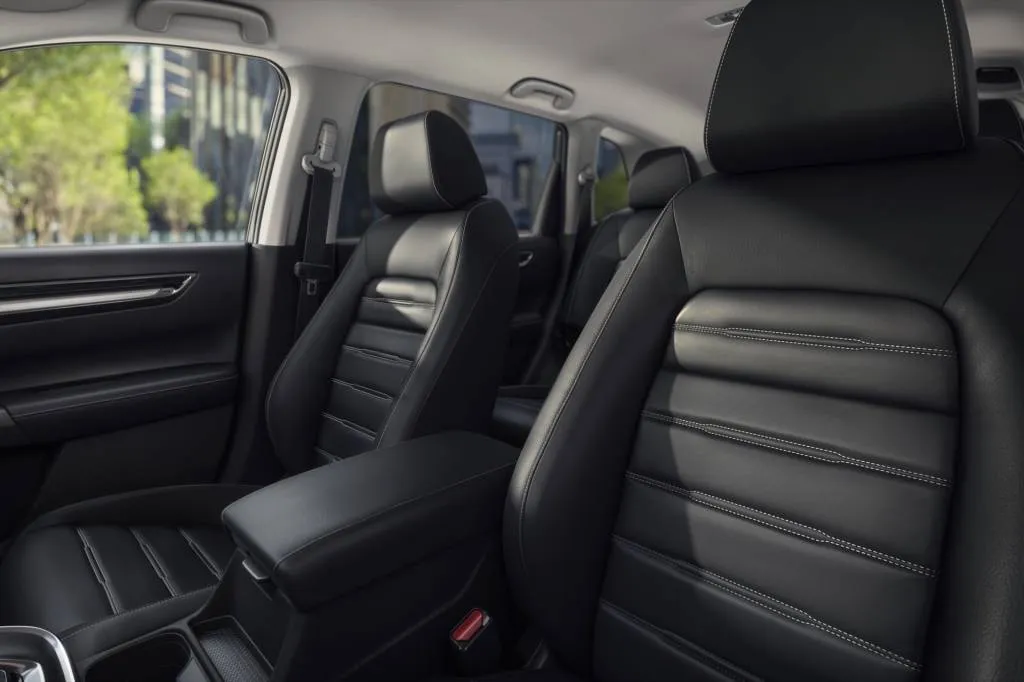
2025 Honda CR-V e:FCEV
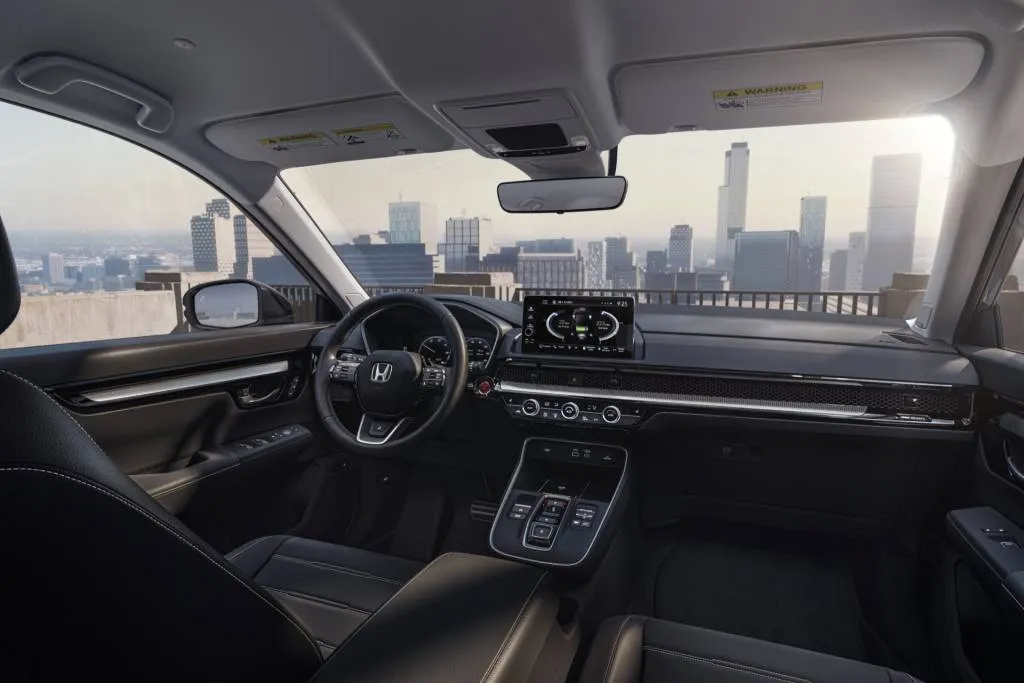
2025 Honda CR-V e:FCEV
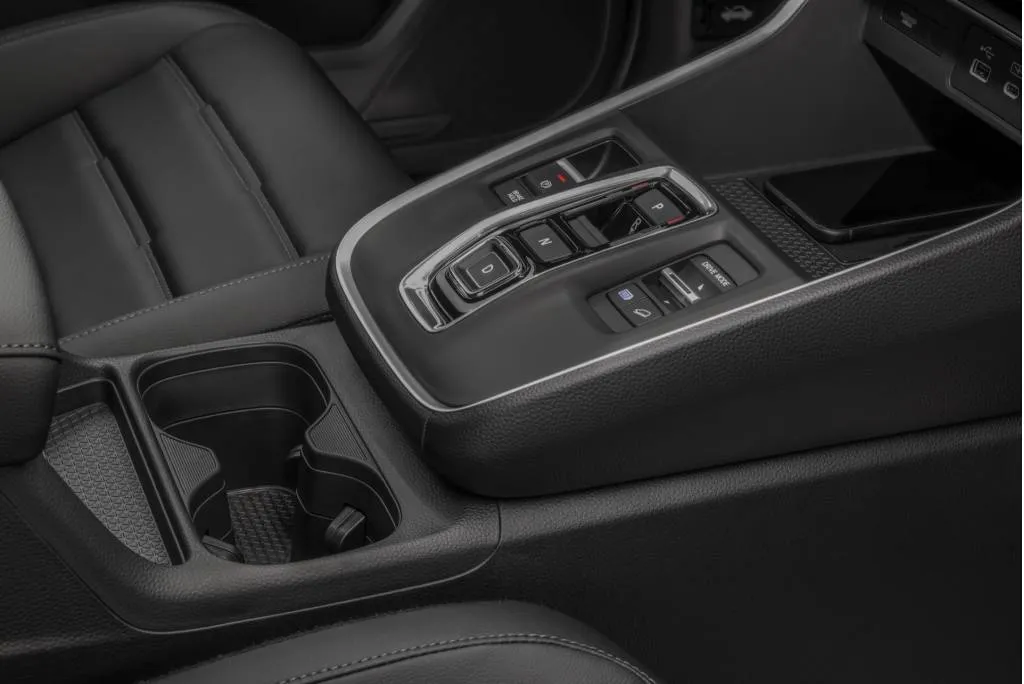
2025 Honda CR-V e:FCEV
Less hydrogen range, all the passenger space
The CR-V e:FCEV’s fuel-cell module makes 92.2 kw—down from the previous generation’s 103 kw as installed in the Clarity Fuel Cell, related to efforts to make the unit more compact. Honda notes that cost has been reduced and durability has been gained, and it claims vastly reduced noise and vibration from the unit itself. With an air-to-air intercooler for the fuel-cell stack, rather than water cooling, the system can now start up in temps as low as -22 degrees F.
The toughest issue in fuel-cell models is typically where to store the hydrogen tanks, which need to be cylindrical, a shape that doesn’t pair well with seating, cargo space, or aero-savvy. While the Nexo, Mirai, and previous Clarity Fuel Cell all checked in at well over 300 miles of range but with a packaging pinch typically involving the trunk or rear seats, the e:FCEV seems to have prioritized that packaging over range.
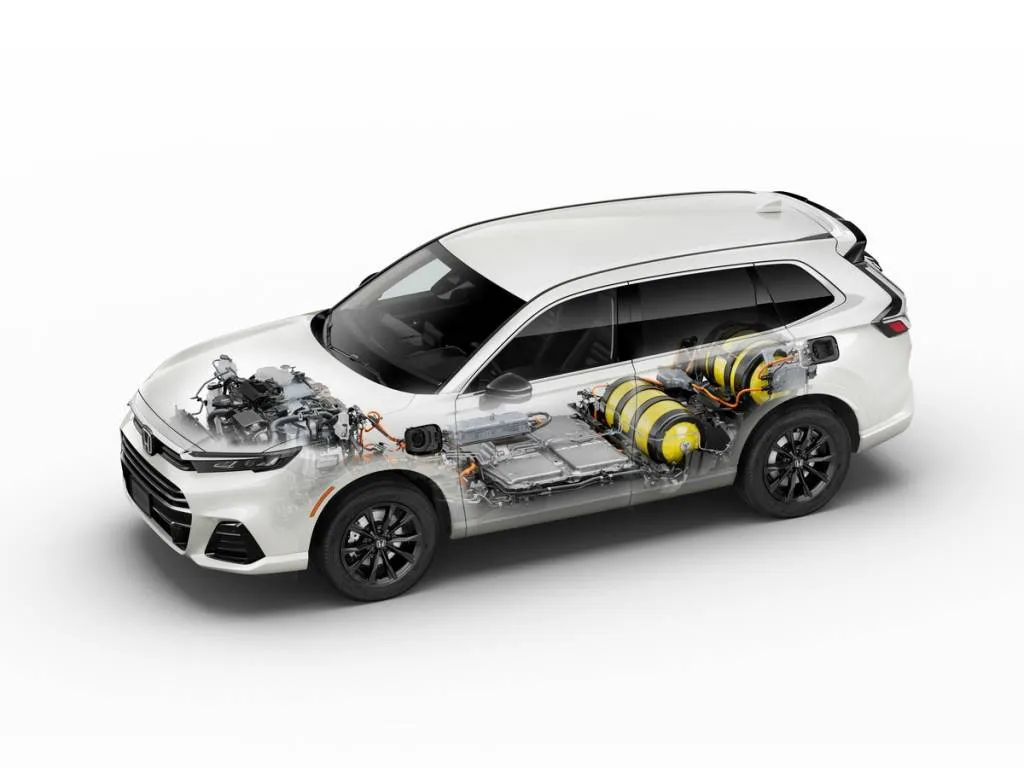
Honda CR-V e:FCEV
Hydrogen storage remains split into two cylindrical tanks, but total storage is 4.3 kg, down from 5.5 kg in the Clarity Fuel Cell. Various core components of the hydrogen system and powertrain have gone modular, with the EV battery under the floor in the middle of the vehicle. The two tanks lay across the width of the vehicle below and behind the back seat, so as not to impact passenger space at all versus the CR-V Hybrid.
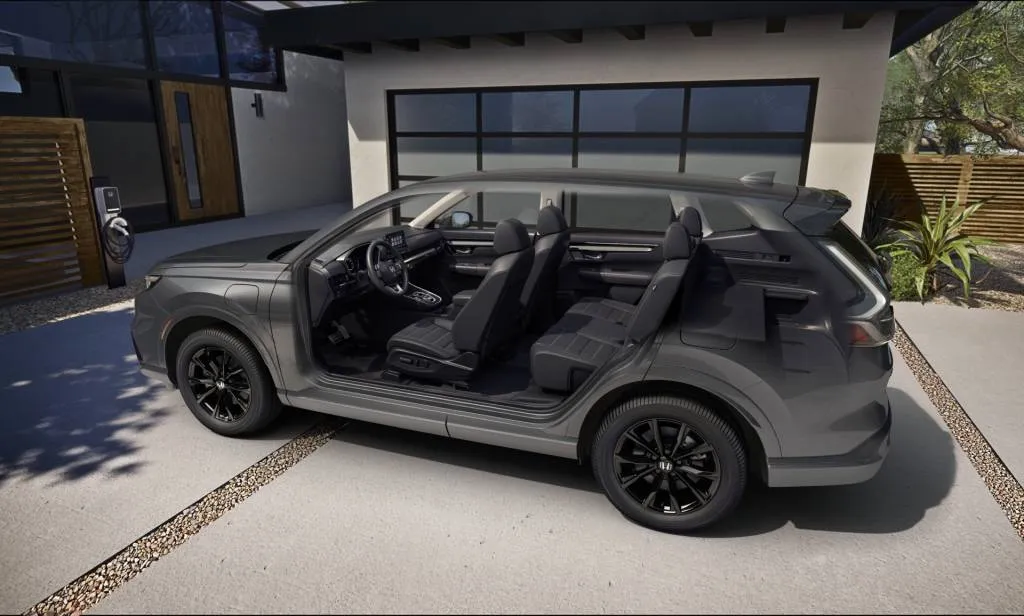
2025 Honda CR-V e:FCEV
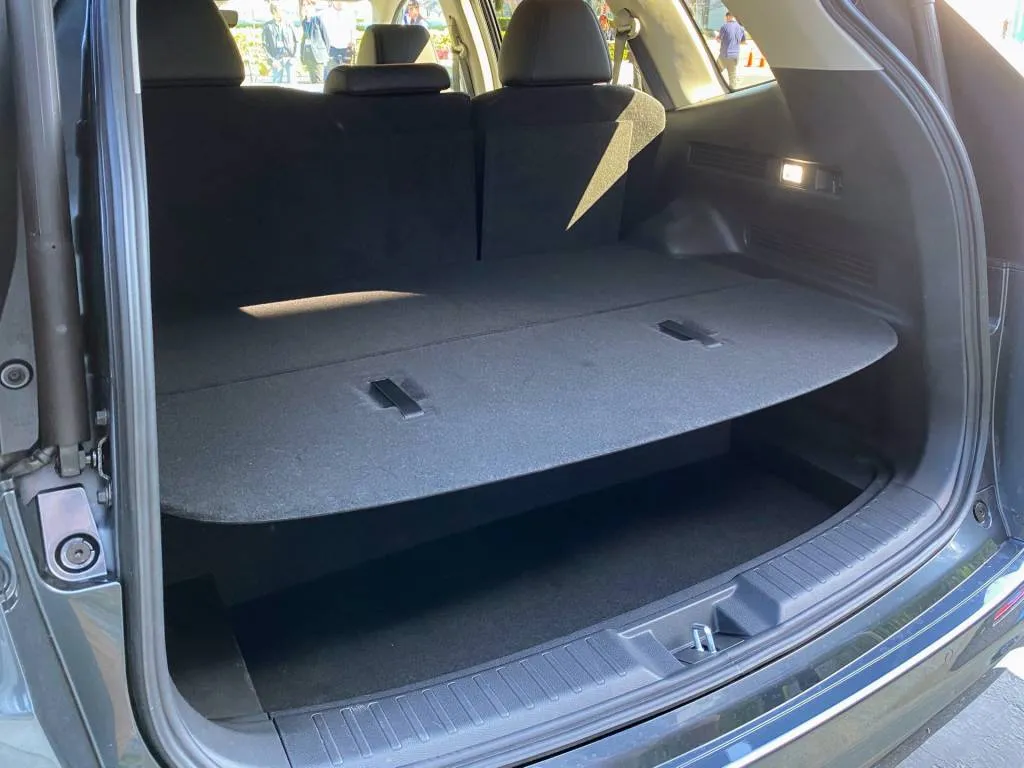
2025 Honda CR-V e:FCEV
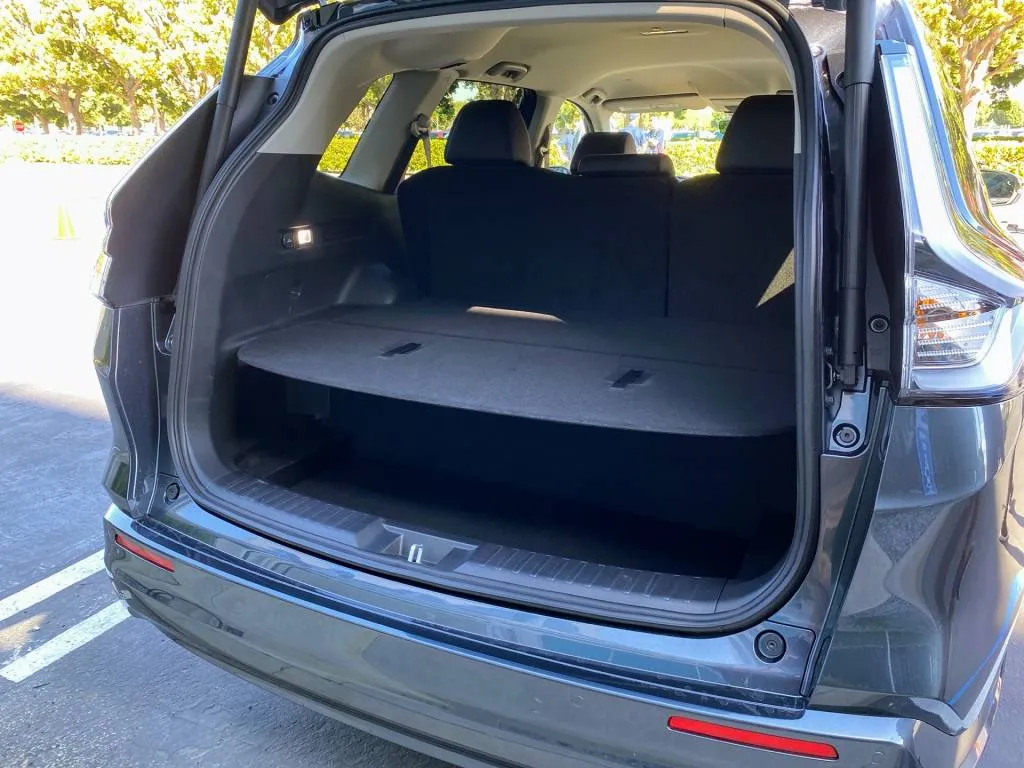
2025 Honda CR-V e:FCEV
The e:FCEV feels packaged pretty much like any other CR-V from the front seat or rear seat. The only exception is that, if you fold down the rear seatbacks there’s a hump across the floor to navigate—although a two-position rear cargo shelf in back helps make the most of the compromise in day-to-day use. As in other CR-V models, you’ll find enough headroom and legroom in back, even if you’re sitting behind a taller driver, while seats don’t have a lot of side support but are soft and supportive otherwise.
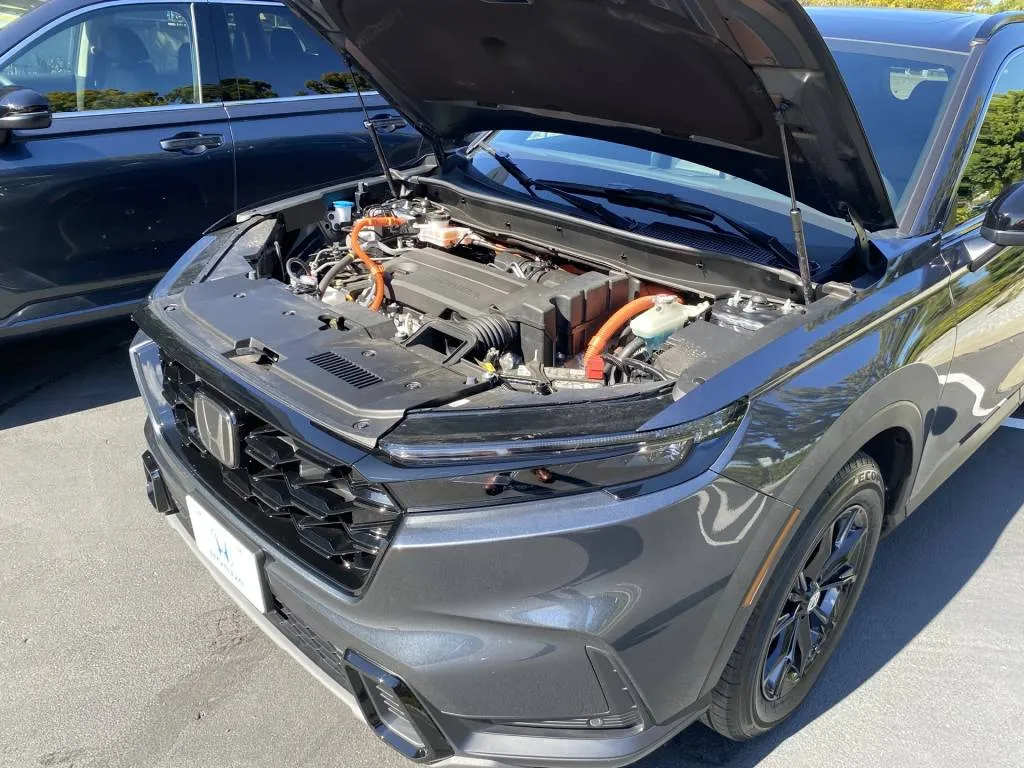
2024 Honda CR-V Hybrid
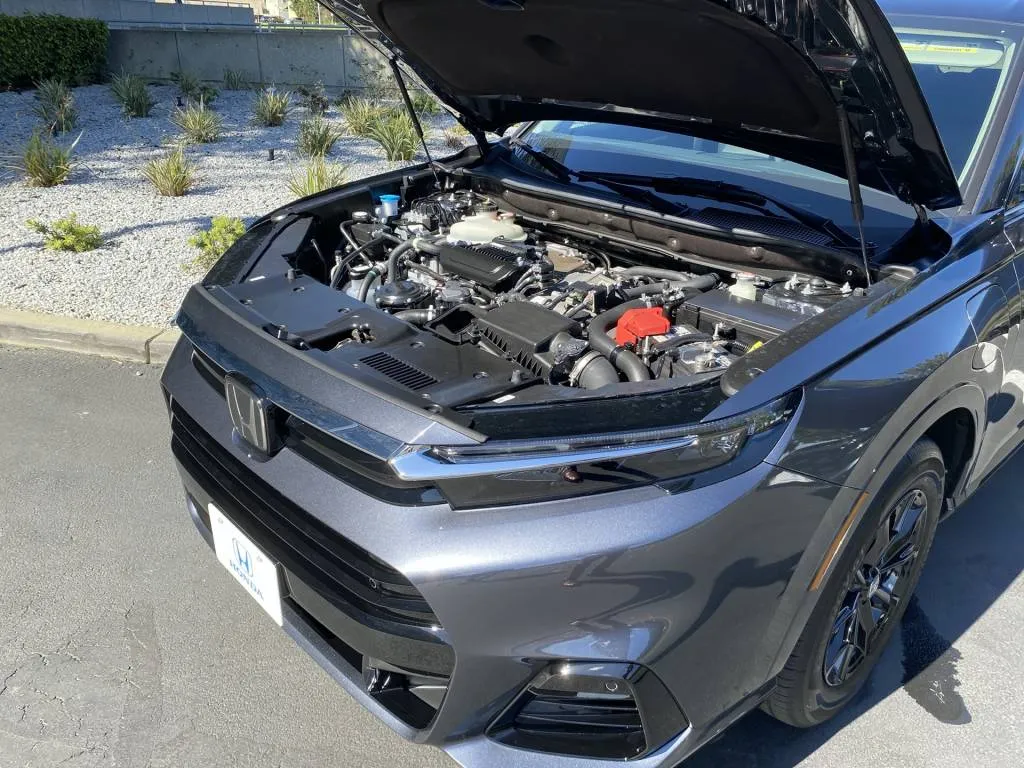
2025 Honda CR-V e:FCEV
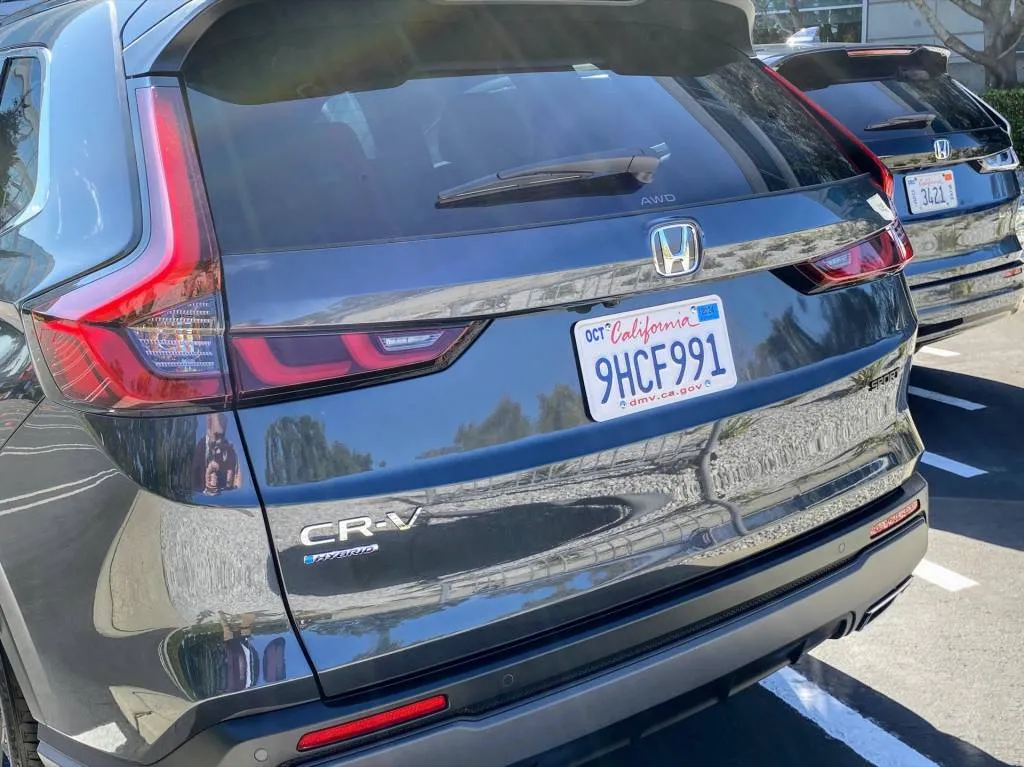
2024 Honda CR-V Hybrid
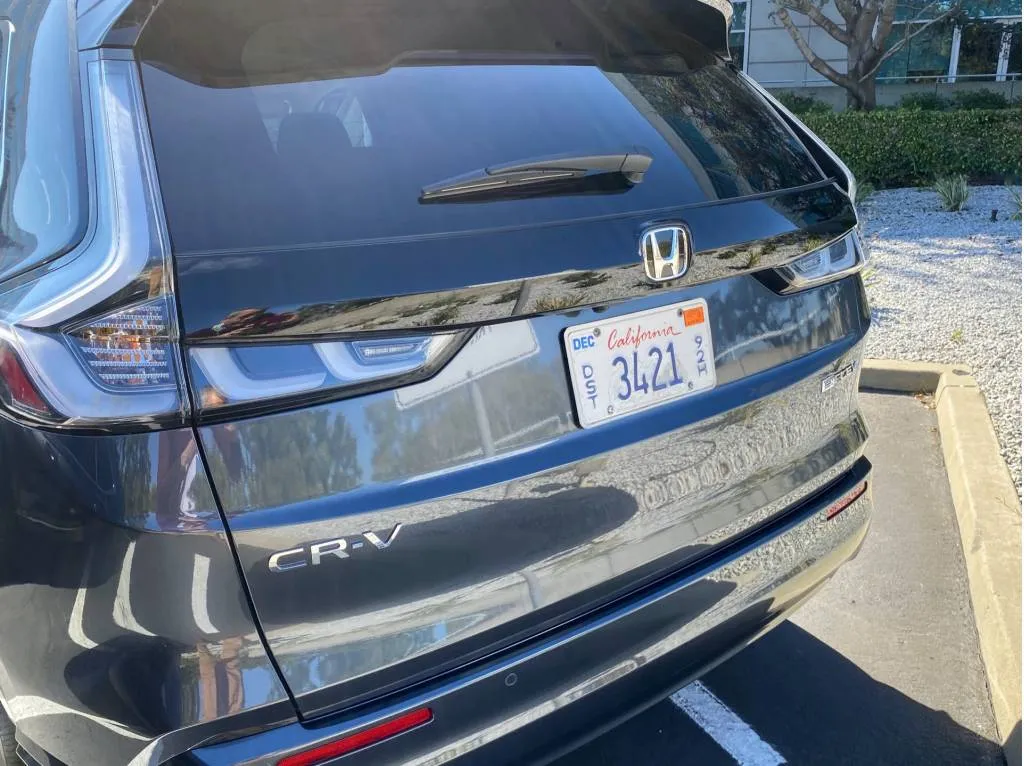
2025 Honda CR-V e:FCEV
On the outside, a series of front and rear design tweaks soften the look somewhat, while 10-spoke, 18-inch alloy wheels look like they’d fit right into the rest of the CR-V lineup but are unique to this variant. There’s a larger grille opening (look lower); the front overhang has been extended about four inches; clear taillight lenses and lower body garnishes give it a somewhat different attitude, but even next to a Hybrid it seems subtle.
As in other CR-V models, a honeycomb mesh midline is probably the most striking aspect about the front-seat cabin area. The FCEV’s seats also get different, bio-based synthetic leather, plus synthetic leather for the steering wheel.
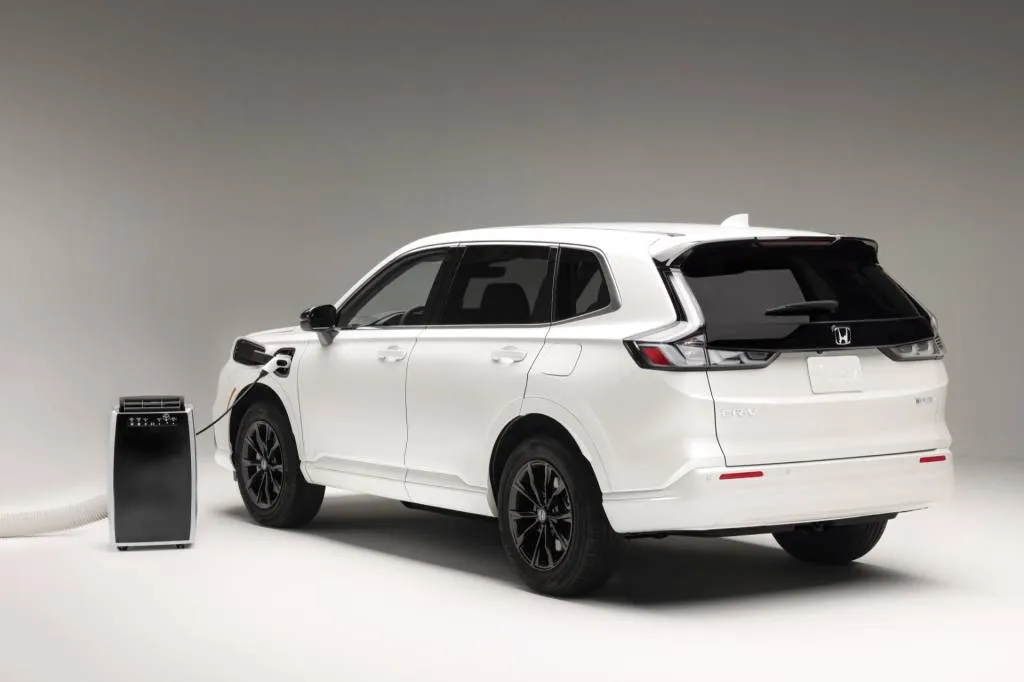
2025 Honda CR-V e:FCEV
e:FCEV is derived from a PHEV Americans can’t get
The CR-V e:FCEV is front-wheel driven and produces a peak 174 hp and 229 lb-ft of torque. Honda didn’t have a peak power figure for the vehicle if it’s out of hydrogen yet still driving on a full charge. Engineers confirmed that running the fuel cell module is needed for peak power.
Honda explained that in conceiving the e:FCEV it borrowed as much as it can from the European-spec CR-V Plug-In Hybrid, including its thermally managed lithium-ion battery pack, its inverter, and its electric motor. In all, the plug-in fuel-cell version weighs essentially the same as the plug-in hybrid and about 500 pounds more than the CR-V Hybrid—likely around 4,300 pounds.
Honda indicates an official 0-62 mph acceleration time of 9.5 seconds for the CR-V PHEV, where the motor makes a higher 181 hp and 247 lb-ft of torque. Expect 0-60 mph in about 10 seconds here in the fuel-cell version. The CR-V e:FCEV chirps respectably off the line but without anything pinning you to your seat. My drive only took me to about 55 mph, and there I noticed the powertrain didn’t feel quite as perky.

2025 Honda CR-V e:FCEV
To fit impact zones with the fuel cell module’s different underhood space, the FCEV gets a new front bulkhead plus a new rear tank frame that’s utilized as a structural member. Only when you stand up right next to it do you notice the slightly longer nose. Rear roll rigidity has also been increased, with stiffer rear stabilizer bar mounts (stabilizers front and rear).
I was able to drive the e:FCEV back-to-back with the U.S.-spec CR-V Hybrid, with handling limited to some L-shaped curves around warehouses and strip malls. I got the impression that the e:FCEV does drive heavier, as well as a bit stiffer, to control the weight, with more harsh bounding motions over large heaves and railroad tracks. Overall, it’s a smooth-riding vehicle but not inspiring in any performance sense.
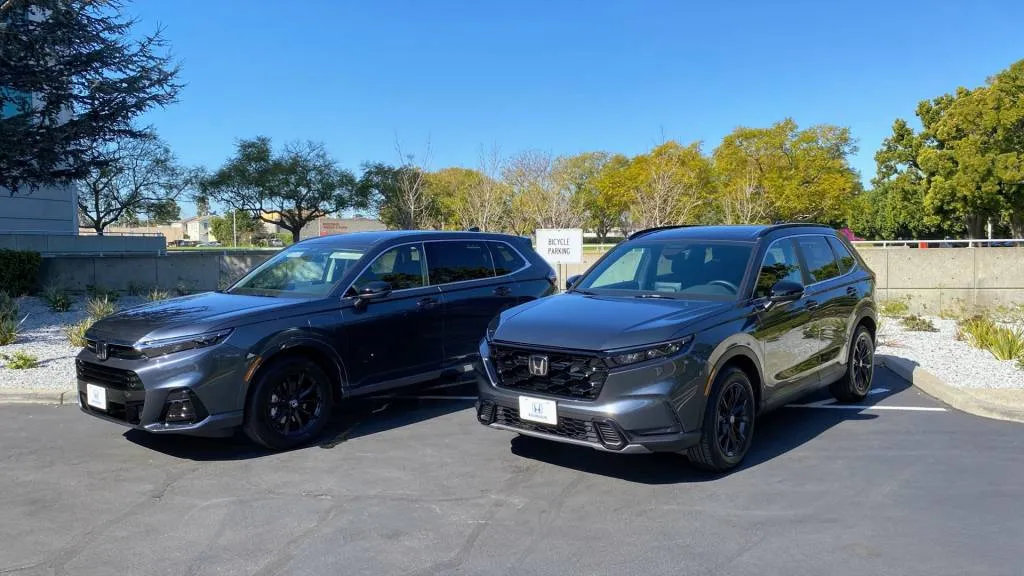
2025 Honda CR-V e:FCEV and 2024 Honda CR-V Hybrid
EV-like regen modes, can power all sorts of gear
There are only a few key interface differences versus other CR-Vs. The shift lever is replaced by push-buttons, and the Drive Mode selector (Normal, Sport, and Econ) has been moved to the right side of the console, along with the powertrain mode button (Auto, EV, Save, and Charge). EV mode locks in plug-in charge until you use up that amount of the battery, while Save runs the fuel cell nearly all the time, using the buffer portion of the battery only. I quickly found that Sport and Save can’t be selected at the same time (because the fuel cell is required for max power). Four levels of deceleration can also be selected via zinc-alloy paddles—in the same way as Civic and Accord hybrids, and with the strongest regen not quite a one-pedal mode.
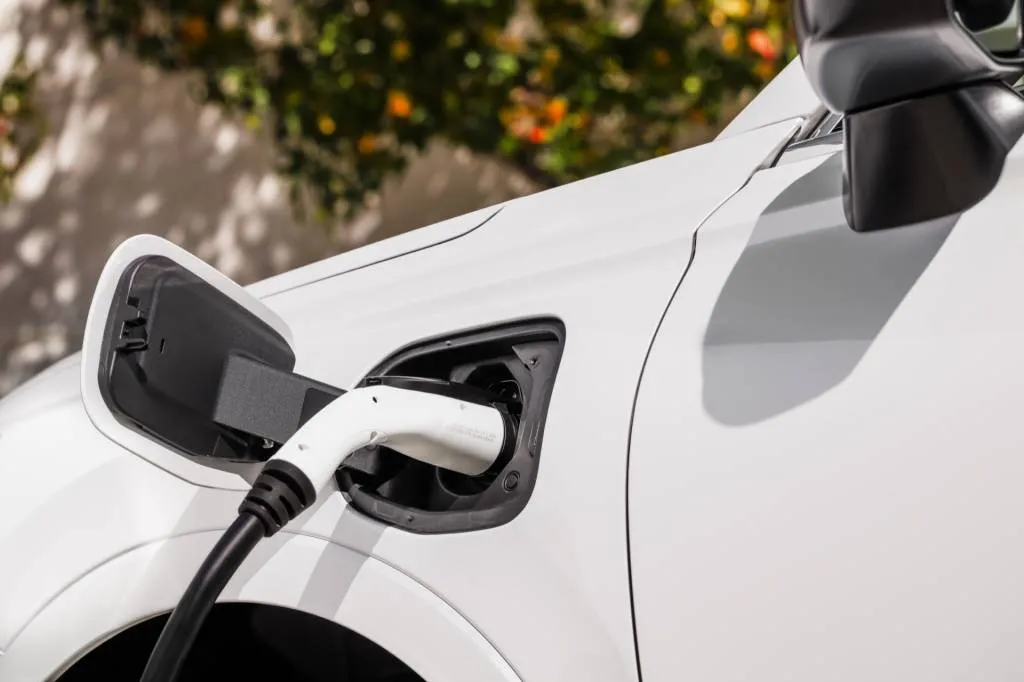
2025 Honda CR-V e:FCEV
The connector that’s included with the CR-V offers a 110-volt power outlet that can run appliances, power tools, camping equipment, or an air conditioner, at up to 1.5 kw. Honda has suggested that the CR-V e:FCEV has broader V2X ability baked in, potentially allowing the vehicle to share energy with the grid, the home, or other vehicles, but that functionality isn’t here yet.
There are only two colors, and the FCEV is only offered in top Touring form with heated front seats, a heated steering wheel, wireless phone charging, 12-speaker Bose Centerpoint audio, a 10.3-inch gauge display, and a version of Honda’s 8.9-inch touchscreen system with wireless Apple CarPlay and Android Auto. I paired my iPhone very quickly and used CarPlay for the short driving route. You can very easily flip back and forth between that and the dynamic displays explaining the powertrain.
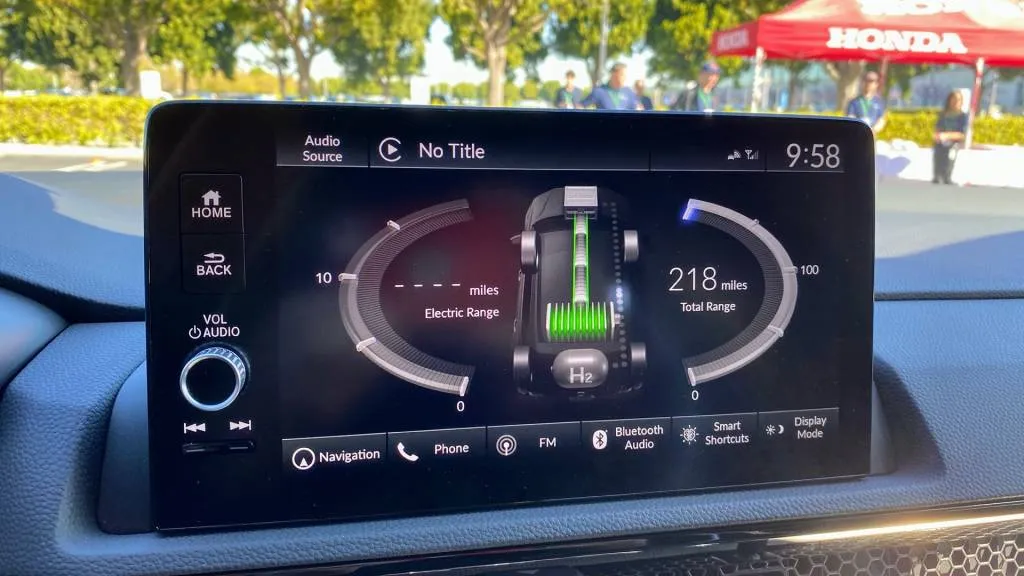
2025 Honda CR-V e:FCEV
An exotic in CR-V clothes
When the Clarity Fuel Cell arrived, Honda emphasized that while sales of that vehicle would be in the thousands, these next-generation models would be in the tens of thousands.
Now Honda is aiming for 2,000 units per year of these FC systems, across all those applications, including just 300 CR-V e:FCEVs annually at first, with hopes for 600 of them annually. They’ll be offered only through a special lease, and Honda will be covering some of the hydrogen. It also flags that the e:FCEV qualifies for California single-occupant HOV lane use.
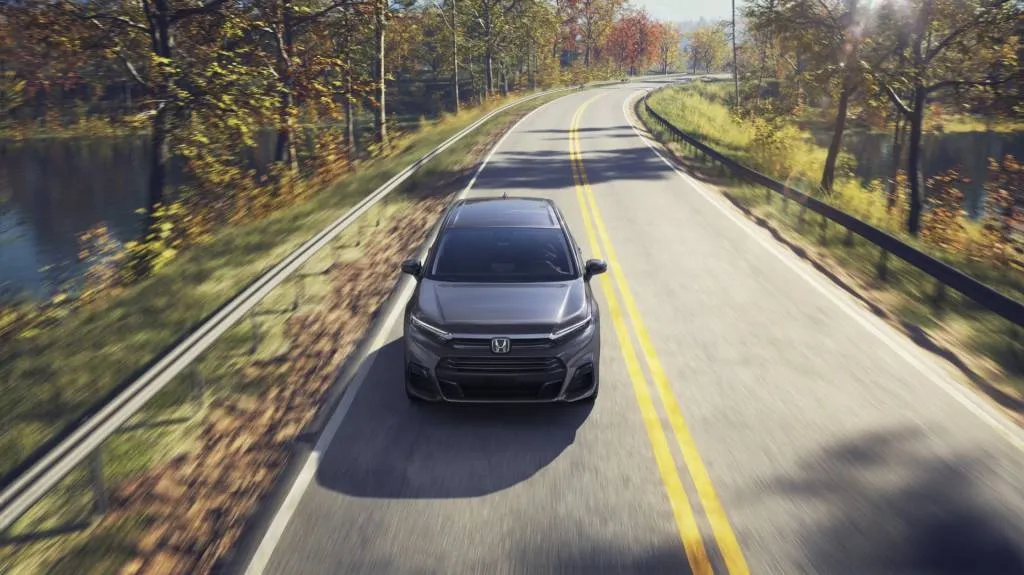
2025 Honda CR-V e:FCEV
The e:FCEV is effectively an exotic car masquerading as a CR-V. The few hundred Honda makes per year will be essentially handbuilt in Marysville, Indiana. Honda noted that this is no automated assembly line; it takes 20 days to build each FCEV.
Honda is at last delivering hydrogen fuel-cell technology in a refreshing form—one that makes sense not with a hypothetical infrastructure that might arrive (and be reliable, and affordable) in a future scenario, but with a solid backup for today’s work-in-progress hydrogen reality.
In the near term, battery electric has won, but fuel cells have promise over the long term, when all the issues with the infrastructure and hydrogen generation have been solved. For that, the CR-V e:FCEV is a very nice-driving bench-warmer.
